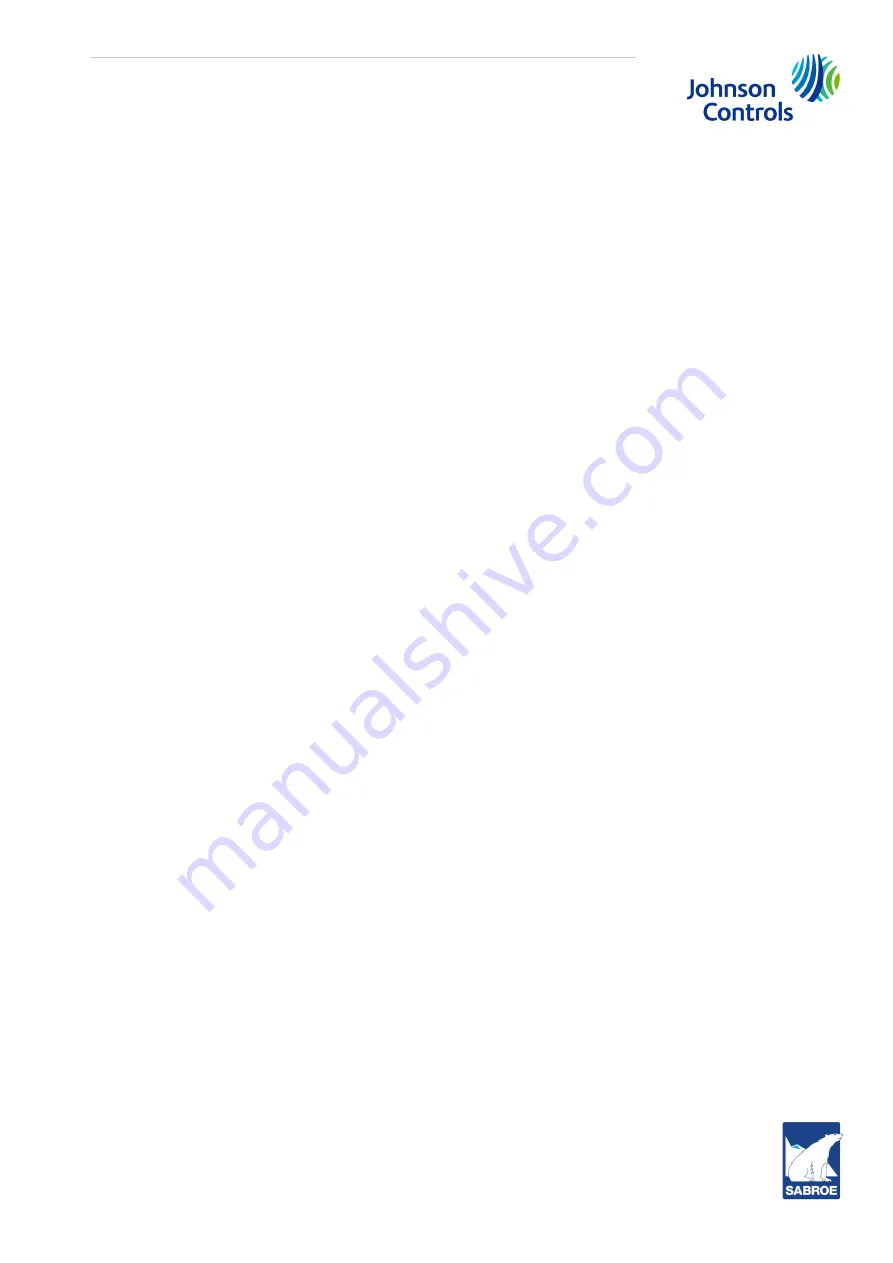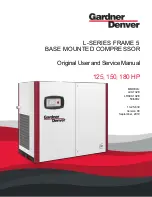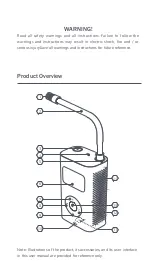
Operating manual- SAB 355 (including ATEX)
004059 en 2019.11
41/63
6.16
Compressor oil cooling systems
The unit can be equipped with one of several systems for controlling the compressor oil tempera-
ture. They are single or dual-port liquid injection and refrigerant-cooled (thermosyphon) or
water-cooled oil coolers. Each system is automatically controlled, independent of compressor
loading or unloading.
Oil cooling systems should maintain oil temperature within the following ranges for R717 and
HCFC/HFC:
Liquid injection oil cooling:
55-77°C
External* oil cooling:
49-71°C
* Refrigerant-cooled (Thermosyphon) oil cooling (TSOC) or water-cooled oil cooling (WCOC).
Single-port liquid injection
The single-port liquid injection system is designed to permit liquid refrigerant injection into one
port on the compressor at any given moment, and it operates as outlined.
The solenoid valve, YY5, is energised by the microprocessor when the temperature sensor, in-
stalled in the compressor discharge, exceeds the LIOC (Liquid Injection Oil Cooling) set point.
High-pressure liquid refrigerant is then supplied to the temperature control valve (TCV). Refer to
subsection
Dual-port liquid injection
The dual-port liquid injection system is designed to obtain the most efficient compressor perform-
ance at high and low compression ratios by permitting injection of liquid refrigerant into one of
two ports optimally located on the compressor. This minimises the performance penalty incurred
with liquid injection oil cooling.
The dual-port system contains all the components of the single-port system with the addition of a
double-acting solenoid valve, YY9, and it operates as outlined.
The solenoid valve, YY5, is energised by the microprocessor when the temperature sensor, in-
stalled in the oil manifold, exceeds the LIOC set point. Liquid refrigerant is then passed through
the temperature control valve (TCV) to the double-acting solenoid valve, YY9. Depending on the
compressor’s operating volume ratio (V
i
), the microprocessor will select the flow of the liquid re-
frigerant to either compressor port SL-1 or SL-2, whichever is more efficient.
When the compressor operates
below
3.5 V
i
, the compressor port, SL-1, supplies the liquid cool-
ing. When the (V
i
) rises
above
3.5 V
i
, port SL-2 supplies the liquid cooling.
Liquid injection adjustment
For discharge temperature set point and PID regulator parameters, refer to the operating manual
for the control system. The discharge temperature set point is set to the required oil temperature,
see section
6.16 Compressor oil cooling systems
6.17
Suction check valve by-pass
The unit is equipped with a low-pressure-drop suction check valve bolted directly to the compres-
sor housing. Units with an 8" stop valve or larger will be piped as shown in Fig. 22. During normal
operation, valve NV-1 is closed. This is a pump-out connection to allow refrigerant removal to the
system suction prior to evacuation for servicing. In most systems, valve NV-2 must be open at all
times. It should normally be cracked open to allow the oil separator to slowly bleed down to ap-
proximately system suction pressure when the unit is stopped (having this valve cracked open al-
lows the compressor drive motor to have an easier start and the discharge check valve will seat
more tightly). If the drive coupling backspins, start closing the valve until the backspin stops. If
the separator oil level foams excessively on shutdown, NV-2 should be closed slightly. If the
















































